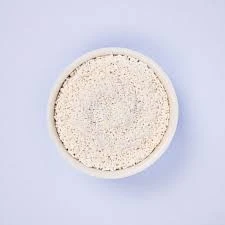
sweeteners 952 950 and 955
Understanding Sweeteners A Focus on E952, E950, and E955
In the ever-evolving landscape of food and beverage production, sweeteners play a pivotal role in meeting consumer demand for sugar alternatives. Among the numerous sweeteners available, E952 (sodium cyclamate), E950 (acesulfame K), and E955 (sucralose) stand out due to their widespread use and regulatory approval in various countries.
E952 - Sodium Cyclamate
Sodium cyclamate (E952) is a synthetic sweetener that is approximately 30 to 50 times sweeter than sugar. It was discovered in the 1930s, and its use skyrocketed in the following decades as a low-calorie alternative to sugar. Cyclamate is often used in beverages, baked goods, and other food products due to its ability to withstand heat, making it suitable for cooking and baking. However, its safety has been a subject of debate. In the United States, cyclamate was banned in the 1970s after studies suggested a potential link to cancer in laboratory rats. Despite this, it remains approved in many other countries, including those in the European Union, where it's deemed safe when consumed within the established acceptable daily intake (ADI).
E950 - Acesulfame K
sweeteners 952 950 and 955

Acesulfame K, or E950, is another artificial sweetener that is known for its intense sweetness—about 200 times sweeter than sugar. It is often used in combination with other sweeteners to enhance sweetness and mask any unpleasant aftertaste. Its stability at high temperatures makes it a popular choice in baked goods and soft drinks. Like cyclamate, acesulfame K has been evaluated for safety by various regulatory agencies, including the FDA and EFSA, which have concluded that it is safe for human consumption. However, as public awareness of food additives grows, some consumers express concerns about the long-term health effects of consuming artificial sweeteners, including E950.
E955 - Sucralose
Sucralose, widely recognized as E955, is a chlorinated derivative of sucrose and is about 600 times sweeter than sugar. One of its key advantages is that it is not metabolized by the body for energy, making it a popular choice for those looking to reduce caloric intake. Sucralose can be used in a variety of products, from beverages to desserts and sauces. The regulatory status of sucralose is robust, as it has undergone extensive testing to establish its safety profile. Studies support its use as a safer alternative for people with diabetes and those seeking to manage their weight. Nevertheless, the ongoing debate about the health implications of long-term sucralose consumption persists among consumers and health professionals alike.
Conclusion
In conclusion, E952 (sodium cyclamate), E950 (acesulfame K), and E955 (sucralose) offer diverse options for consumers and manufacturers looking for low-calorie sweetening alternatives. While their safety is supported by regulatory authorities worldwide, ongoing discussions about their long-term health effects indicate the need for consumer education and transparency in labeling. As the market for sugar substitutes continues to grow, staying informed about these additives can help consumers make healthier choices aligned with their dietary preferences and health goals.
-
The Safety Challenges of Ammonium Nitrate FertilizerNewsJun.26,2025
-
The Critical Role of Mining ChemicalsNewsJun.26,2025
-
Shelf Life of Glacial Acetic Acid Food GradeNewsJun.26,2025
-
Enhancing PVC Longevity with 1,2,3-Benzotriazole InnovationsNewsJun.26,2025
-
China’s Dominance in Food Additive ProductionNewsJun.26,2025
-
Can Aluminum Hydroxide Replace More Toxic Alternatives?NewsJun.26,2025
-
PE and PP Plastics with Benzotriazole AdditivesNewsJun.12,2025
Hebei Tenger Chemical Technology Co., Ltd. focuses on the chemical industry and is committed to the export service of chemical raw materials.
-

view more DiethanolisopropanolamineIn the ever-growing field of chemical solutions, diethanolisopropanolamine (DEIPA) stands out as a versatile and important compound. Due to its unique chemical structure and properties, DEIPA is of interest to various industries including construction, personal care, and agriculture. -

view more TriisopropanolamineTriisopropanolamine (TIPA) alkanol amine substance, is a kind of alcohol amine compound with amino and alcohol hydroxyl, and because of its molecules contains both amino and hydroxyl. -

view more Tetramethyl Thiuram DisulfideTetramethyl thiuram disulfide, also known as TMTD, is a white to light-yellow powder with a distinct sulfur-like odor. It is soluble in organic solvents such as benzene, acetone, and ethyl acetate, making it highly versatile for use in different formulations. TMTD is known for its excellent vulcanization acceleration properties, which makes it a key ingredient in the production of rubber products. Additionally, it acts as an effective fungicide and bactericide, making it valuable in agricultural applications. Its high purity and stability ensure consistent performance, making it a preferred choice for manufacturers across various industries.











